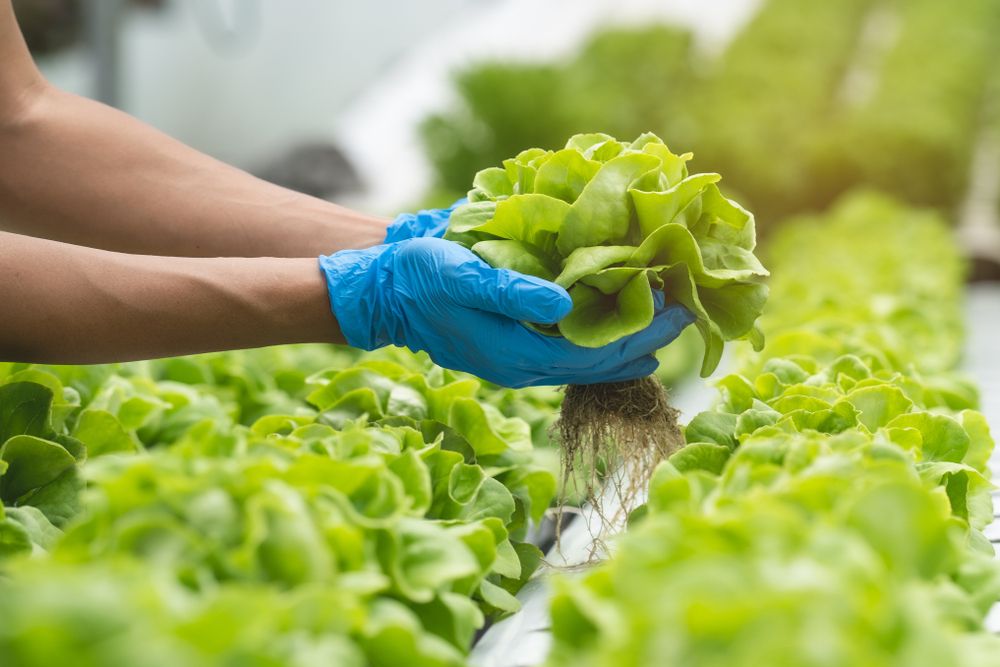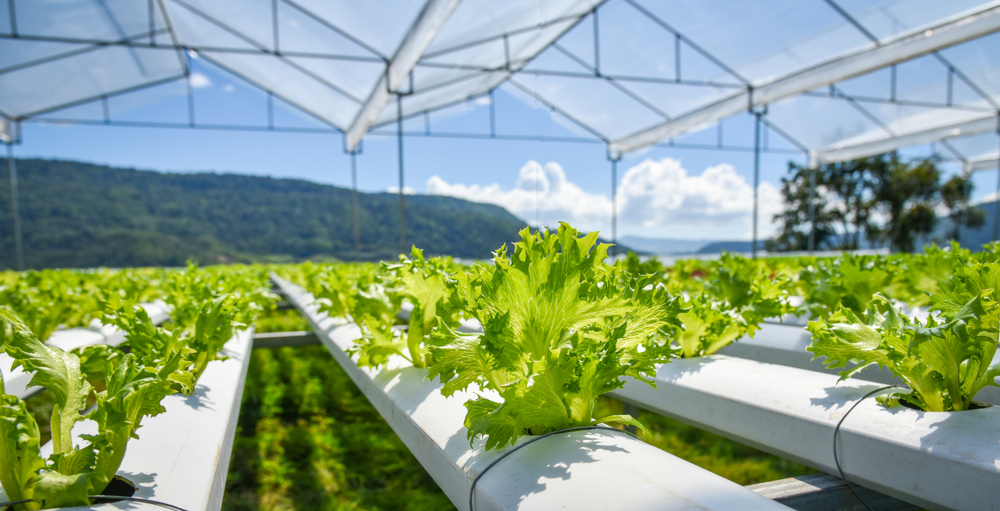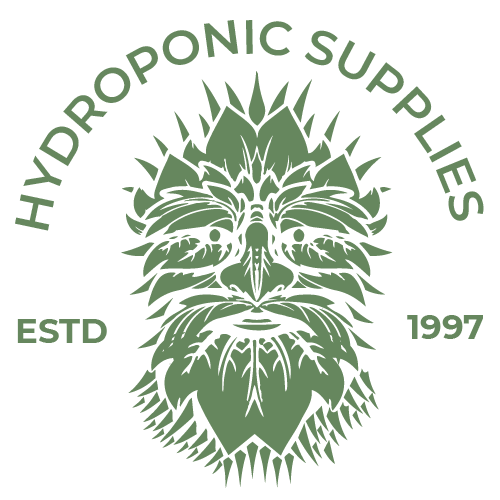
Know about RO Systems? If not, you must have witnessed. Keep in mind the water purifier system you frequently see in kitchens or on water bottles. In essence, it is a system for filtering water. Devices that use reverse osmosis (RO) are excellent at filtering contaminants out of tap water and preventing them from entering hydroponic systems. RO water is free of the pesticides, heavy metals, and other toxins that are frequently found in water sources. On RO water, your plants will grow big and strong, and you can unwind knowing they are getting everything they need to thrive. Plants need pure water with just the right amount of minerals to speed up their growth and vigour. Water is the most crucial nutrient for your plants, but it can be contaminated and effects the growth. In this blog post, Creative Grow Store as Hydroponic Gardening expert will guide you about the role and importance of Reverse osmosis (RO) systems. If you are wondering to find the best hydroponic store near me or hydro shop online, just tap our website and find us. We assure you the quality and best products.
Explore the Role of Reverse Osmosis System with Creative Grow Store
What is Reverse Osmosis (RO)?
Reverse osmosis (RO) hydroponics is a technique for hydroponically growing plants that uses reverse osmosis water purification. By applying pressure to force water molecules through a semi-permeable membrane, the reverse osmosis process purifies water by removing impurities, contaminants, and minerals. As a result, mineral-poor purified water is produced.
New seeds, cuttings, and clones benefit greatly from RO (reverse osmosis) water. Because RO water has a low TDS, it is ideal for hydroponic systems. The primary feature of a RO system is a membrane, which only allows for specific components to flow through it, which is why the TDS of reverse osmosis water is so low. This indicates that before they reach excessive EC and hazardous levels, your plants may access all the minerals in your reservoir.
Use of Reverse Osmosis in RO Hydroponics:

Reverse osmosis hydroponics is a method that allows growers to have greater control over water quality, nutrient levels, and pH balance, contributing to healthier and more productive plants in the hydroponic system.
Controls Nutrient Level:
As RO water contains few minerals, growers can precisely regulate the amount of nutrients in the hydroponic solution. Water is uncontaminated to begin with, growers can add particular nutrients and modify their concentrations to meet the needs of the plants they are cultivating.
Minimize the Risk of Nutrient Imbalances:
The risk of nutrient imbalances or too much salt in the hydroponic system is reduced by beginning with purified water. This lessens the possibility of nutrient-related problems and ensures the plants receive the proper amount of nutrients.
Prevention of Mineral Buildup:
Over time, the hydroponic system may develop a buildup of minerals and salts if it is exposed to water with a high mineral concentration or regular tap water. This accumulation may alter the pH balance of the nutrient solution, which might be detrimental to plant health. RO water helps to avoid mineral buildup because to its low mineral concentration, which reduces the need for frequent system cleaning and maintenance.
Eliminating Pesticides, Heavy Metals, and Toxins from the Water Supply:
RO systems also purge heavy metals, pesticides, and other pollutants from the water supply. RO is used to purify both drinking water (although some minerals must be put back) and water for hydroponics. That will be
Water PH stability:
Since RO water doesn’t include the alkaline or acidic minerals present in conventional tap water, its pH usually hovers around 7. With a neutral pH as a starting point, gardeners have more control over the nutrient solution’s pH, making it simpler to maintain the ideal pH range for optimum plant nutrient uptake.
Disease prevention:
Unlike untreated water sources, RO water is devoid of numerous bacteria, pathogens, and pollutants. In the hydroponic system, using purified water from a RO system lowers the danger of illness and infection, promotes better plant development, and reduces the need for pesticides or fungicides.
Note: Growers must add the proper hydroponic fertilizers to the RO water to satisfy the plant’s nutritional needs.
How to Use Reverse Osmosis (RO) Water?

A few factors must be taken into account when using reverse osmosis (RO) water in hydroponics to achieve the best possible plant development. An instruction manual for using RO water in hydroponics is provided below:
Putting up a RO system:
Installing a reverse osmosis water filtering system is the first step. You will receive cleaned water for your hydroponic system because of its ability to remove pollutants, minerals, and other impurities from the water.
Check the water’s purity:
It’s crucial to evaluate the quality of the RO water before utilising it in your hydroponic system. Measure the pH and nutrient contents of the RO water using a digital pH meter and an electrical conductivity (EC) meter. RO water typically has a neutral pH (about 7) and a low EC rating, which denotes a deficiency in minerals and nutrients.
Adjust pH and nutrient levels:
A good growing environment for your plants requires that you alter the pH and nutrient levels because RO water lacks vital minerals and nutrients needed for plant growth. Bring the water pH to the optimum range for your particular plants using pH-adjusting solutions. To provide the water the nutrients it needs for plant development, you must also add hydroponic fertilizers from hydroponics store. Adjust the nutrition levels in accordance with the directions on the nutrient package.
Keep an eye on pH and EC:
Make sure the pH and EC levels of the fertiliser solution stay within the limits needed by your plants by checking them often. Making appropriate modifications to the pH and nutrient levels is important to maintain perfect conditions for plant growth.
Water Schedule:
When using RO water in hydroponics, it is crucial to establish an optimal watering plan. Since RO water lacks minerals, plants may have increased their water intake to make up for nutritional deficiencies. Keep an eye on the moisture levels in the soil and water the plants appropriately to avoid overwatering or underwatering.
Nutrient shortages:
Watch out for any indications of nutritional deficits in your plants. If you see any deficiency signs in your plants, RO water may need to be supplemented with extra micronutrients as it is deficient in minerals and nutrients.
Flushing:
To avoid the accumulation of excess salts and minerals, it is recommended that you flush your hydroponic system from time to time with fresh RO water. Flushing promotes the best nutrient absorption by the organism and maintains a balanced nutrient solution.
hydroponics supplies near me or best hydro store near me must be the part of your continuous search as one can understand the importance of hydroponics so, we at creative grow store provides you with the best hydroponics essentials with guidance. No more need of searching hydroponics shop near me instead just give us a buzz and order.
Conclusion:
A reverse osmosis system plays a vital role in maintaining water quality and nutrient balance in hydroponics, creating an optimal environment for plant growth and maximizing the potential for high yields and healthy crops. Always go for proper research either hydroponics Perth or hydroponics Rockingham, where you look for as fertiliser concentrations and pH ranges for the plants in hydroponic system has unique needs. When utilising RO water in hydroponics, regular monitoring and nutrient solution adjustments need aid in creating the ideal circumstances for plant development so, explore the hydroponic shops perth or hydroponic stores perth as it depends on your plants requirement what type of essentials you require and their certain limits like pH or nutrients, setup accordingly.
